Enterprise resource planning (ERP) systems are highly complex software suites that can be time-consuming to implement. Choosing one ERP to adopt can already be a challenge, and having to deal with an impending end-of-life scenario for a system you have come to rely on can become a nightmare. Yet various factors contribute to making working with legacy ERP solutions potentially even more difficult, if not downright impossible after a certain point.
Anyone who has been in business for at least a little while knows that one of your greatest enemies is time. Markets always evolve, as do the tools any company uses to maintain and expand productivity. All industries ultimately answer to consumer demand, and not necessarily what is convenient for individual enterprises. That is why legacy ERP systems have considerable vulnerabilities that can seriously affect any company. Here are five factors that can lead to legacy ERP solutions having a negative effect on your business:
1. Outdated Technology
ERP software systems have been around for quite some time, and considering the length of some implementation processes, it is understandable that some businesses may be holding onto modules that are years or even decades old. However, technological progress has grown by leaps and bounds in recent times and only continues to go far beyond anything that was available in the past.
Past ERP products were based on programs and hardware that have long been supplanted by new and improved offers. Some of the older technology they were created to integrate with have already entered obsolescence. Legacy ERP that were built to run with programs like DOS are effectively defunct once those operating systems are no longer popular.
Of what has remained in use, virtually all of it has been continuously upgraded to maintain relevancy and have advanced enough well past what they were originally intended for. Even these software products have rapidly outpaced legacy ERP solutions, and there is little reason for any providers to slow down for the sake of one category. Those with older ERP will be continuously playing catch-up, until the day comes when they will be effectively forced to migrate anyway to remain relevant.
2. Lack of Scalability
Because of their deteriorating functionality, legacy ERP solutions can often be ill-equipped to deal with expanding operations. Many of these systems were envisioned for specific sets of tasks and were never intended for moving beyond their predicted scope. This can lead to legacy ERP becoming a tremendous impediment to growth, and growth can be necessary to a company’s survival.
There are options for using an aging ERP system for an expanding business without jumping entirely to a new product, however, these do not remove the risks completely. Third party software and individual upgrades may mitigate some pain points and allow some continued functionality, but this could end up only delating the inevitable. Additionally, over-relying on too many outside modules can cause worse problems down the road. Even if a program add-on provides a sufficient temporary stopgap, it might not have been necessarily intended for that use and can lead to serious downtime-causing errors. Given that the biggest reason for avoiding the adoption of a new ERP solution is to avoid the downtime that migration could cause, pursuing this avenue puts you in pretty much the same place that choosing to upgrade would have, though without the promise of things getting better.
3. Unresponsive to Industry Changes
As technology evolves, so too will supply and demand. Supply chains and inventories will need to be modified as new trends and products emerge. Many older ERP models were based on past industry expectations, and as such, may have to be heavily altered to meet current needs. Those that are too old to accommodate newer software that can address modern demands will obviously hurt your output. Even industry-specific ERP will falter if they cannot account for the developments of the future.
Legacy ERP systems might not be equipped to process new types of data or handle updated procedures. They run the risk of giving you an incomplete picture of your business operations, and can severely affect your material requirements planning. Additionally, your partners and clients will be taking advantage of new technology in their own processes, and if legacy systems cannot handle these more advanced interactions, then you will find yourself lagging behind in the market. Modern ERP offers are increasingly being designed around new technologies, like cloud computing and mobile applications. Legacy ERP systems usually lack these features, and therefore will be unable to participate in the improved connectivity between buyers and sellers – something competitors can take advantage of.
4. Unable to Handle New Regulations
A key function of any valuable ERP system is the ability to maintain compliance features. Many industries have long lists of regulations they must adhere to with their products or services. Failing to do so can lead to severe financial penalties, censure, and even termination of their business. Automated compliance oversight can be the difference between a successful company and a failing one.
Unfortunately for legacy ERP users, the law is another factor that often refuses to stay still. Evolving political stances and environmental changes can force the proposal of additional legislation, or provoke major adjustments to old rules. New regulations can drastically alter can how any business runs, and even the most ostensibly minor compliance issues can have a potentially severe impact.
5. Mounting Costs
Those that are resisting upgrading to a more modern ERP system may be doing so because of the significant costs involved; however, in this case, it is putting off a potentially bad thing now for a guaranteed worse circumstance later. The price of implementing any ERP solution has never been anything to scoff at, but maintaining a system well past its prime will become even more costly as time goes on. The more mature legacy ERP is, the greater the chance that migration will become more difficult as time goes on, and it may reach the point where it is financially or physically unfeasible.
In addition to the migration obstacles, as your older legacy ERP struggles to keep up with modern practices and increased data exchange, you will likely lose money. Those losses will grow as your software continues to face challenges it was never designed for. Shelling out for an ERP upgrade might seem like a daunting cost now, but it will be less than will result from continuing to use a stagnating legacy system.
Avoid the instability of legacy ERP and considering upgrading to a modern system
Moving onto a whole new ERP solution may seem like a considerable risk, but it is comprehensively less of one than sticking with the same system for too long. However, we understand that you may have invested too much time, money, and energy into your legacy ERP system to let go of it too soon. For our clients that wish to remain with their legacy Sage 500 ERP solutions, the good news is that SWK will continue to offer support for the foreseeable future. However, if you are on the fence about whether to migrate to a more modern version, check out these resources to help you make your decision.

